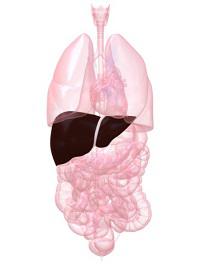Home > 6 Things You Should Know About Liver Cancer
6 Things You Should Know About Liver Cancer
May 20, 2020

- Liver cancer is the growth and spread of unhealthy cells in the liver.
Cancer that starts in the liver is primary liver cancer. Cancer that spreads to the liver from another organ is metastatic liver cancer. - Risk factors for primary liver cancer:
About 21,000 Americans are diagnosed with primary liver cancer each year. One of the few cancers on the rise in the United States, it’s about twice as common in men than in women. Risk factors include other liver diseases, mainly cirrhosis, chronic hepatitis B, chronic hepatitis C, and metabolic dysfunction-associated steatotic liver disease (MASLD), previously called nonalcoholic fatty liver disease, or NAFLD). - Often there are no symptoms of liver cancer.
When they do occur, they may include fatigue, bloating, pain on the right side of the upper abdomen or back or shoulder, nausea, loss of appetite, weight loss, weakness, fever and jaundice. - Doctors often recommend regular liver cancer screenings for those at increased risk. Liver cancer may be diagnosed by a physical examination, imaging tests, blood tests or a biopsy.
- How is liver cancer treated?
It depends on the condition of the liver; size, location, and number of tumors; if the cancer has spread outside the liver, and the person’s age and overall health. Treatment options include a liver transplant, the removal of the tumor from the liver, cryosurgery (freezing and destroying cancer cells), radio frequency ablation (destroying cancer cells with heat), chemotherapy or radiation, or the use of Sorafenib (Nexavar), an oral medication for advanced cases of primary liver cancer. - If you think you’re at risk for liver cancer, regularly see a doctor who specializes in liver disease. Take steps to avoid other types of liver disease. And do whatever you can to avoid obesity, diabetes and alcohol consumption.
Medically reviewed on April 2025.
Last updated on June 6th, 2025 at 12:44 pm